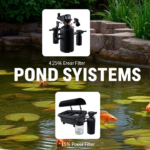These unsung fabric heroes, unknown, are the ultimate garden gardener’s tip, employing a chemical solution-free strategy to control unwanted plants and liberate garden beds. It is not as easy as just laying them out to be the superior weed controller; it is an installation plan to maintenance in the long term so your effort is worth it at the end to have a weed-free grass.
Reading Up on Your Weapon: The Weed Suppression Mat
Although as yet you’re not actually rolling out a roll, you may find it beneficial to have a look at what on earth a weed suppression mat is and does. It’s really a porous barrier that prevents weeds from developing by preventing penetration by sunlight but still letting water, air, and nutrients through to the ground below. Polypropylene or some other synthetic fabric is woven or non-woven in the majority of weed mats. Woven or non-woven is generally by use. Weaving matting is tensiler and better for sloping or heavy duty purposes, while non-weaving matting is more consistent in its coverage and better for use in average garden beds. Know your products is know about selecting the correct tool for the task if you’re browsing whats-availables like the sometimes-at-weed-mat-Weed mat kmart or browsing the specialty garden center.
Preparation is Paramount: Laying the Groundwork
Weed mat installation success or failure is all too often a result of proper preparation of the garden bed. Begin by removing any trash, roots, and weeds already present on the ground entirely. That’s important; whatever would remain behind will attempt to force through the mat or make imperfections. Even the ground’s surface needs to be leveled so that the mat will be flat and level and won’t leave holes for weeds to sprout. If you’re covering compost or soil amendment, do that *prior to* rolling out the mat. Your delicate plants will thereby have the nutrient-filled foundation to begin with. Slick ground rake will most suit in sticking and evening out lesssty wrinkles or lumps in your final product.
Accuracy Placement: Cutting and Overlapping Like a Pro
You should now have graded the ground and you should now put down the weed mat. Roll out the material and place it flat over the entire area that you plan on covering. Overlap the edges of two pieces 10-15 centimeters where there is enough room on the ground. This will keep weeds from sprouting up through seams. To seed, cut X’s or little round slits with a sharp utility knife or scissors just where you will be planting in your plants. Don’t cut them too large as it gives the weeds room to spread around the plant root system. Firms such as Singhal Geotextile Landscape will normally send their geotextile product, i.e., weed mats, with guidelines so that smart cutting and overlapping can be performed in such a manner so as to achieve maximum use of the weed mat.
Securing Your Investment: Anchoring the Mat
If the Best weed mat is being installed on sloping land or where there is a problem with the wind, it will have to be anchored.
Place them below the mat, particularly where it overlaps, in cut-outs, and edges. Space 1 to 2 meters apart, or more for open winds. For added support and beauty, top weed mat with an additional layer of mulch in the shape of bark chips, gravel, or decking stones. It will press down the mat and also give an even finish and another layer of weeds because it also stops more light from reaching down to the ground. It is also what will retain the mat pressed into your garden bed.
Planting and Ongoing Care: Weeding Suppression
Once your weed mat has been effectively pushed down, you are able to plant.
Seed your plants with care through slits that you have cut in the mat so root balls sit firmly in ground below. Cover bottom hole later with compost or soil. The weed mats will keep the weeds from germinating, but sometimes there’ll be a stray or two, usually in the cut-out areas around your plants or where trash piles up on the surface. Those will have to emerge fast enough that they won’t be able to get full root systems established. Inspect weed mat for ballooning or holes periodically and replace them if they do occur to give effective weed control. Properly maintained weed mat will give you many years of hard-won weed control, taking much of the gardening drudge out of your life and enabling you to sit back and enjoy your neater, brighter exterior.
Conclusion
Choosing the correct weed mat to best fulfill your own purpose is an act of thoughtful consideration of material, weight, and UV stability.
For the durable applications such as long-term beds or paths, the most likely option will be a UV-stabilized heavy-duty woven polypropylene mat. The mats are intended to endure decades of sun and weathering. For small uses or zones to be mulched under with extremely heavy mulch application, a light-duty non-woven material will suffice. It is always a good idea to double-check product specs and reviews so you’re sure of what the weed mat you’re choosing can do for its purpose if it’s .
Frequently Asked Questions
Q: Will a weed mat get rid of all the weeds, or do they sneak through?
A: The ultimate weed-suppressing mat prevents weeds from growing by shading and is also a barrier. It is highly unlikely, though, to kill all weeds. Seeds are blown in over the mat and germinate under the blanket of mulch, or intensely competitive perennial weeds with very invasive taproots will grow through small crevices or slits. Occasional spot-weeding of wayward intruders now and again is still advisable for a weedless lawn.
Q: Mow over weed mat and mulch or gravel, or leave exposed?
A: Exposing a weed mat is alright, but a mulch cover, stone chips, or gravel cover is preferable. In addition to making your garden bed look nicer, this provides additional weed suppression, mat degradation by UV light protection (which provides maximum life, especially in the such as Singhal Geotextile Landscape), and water savings.



